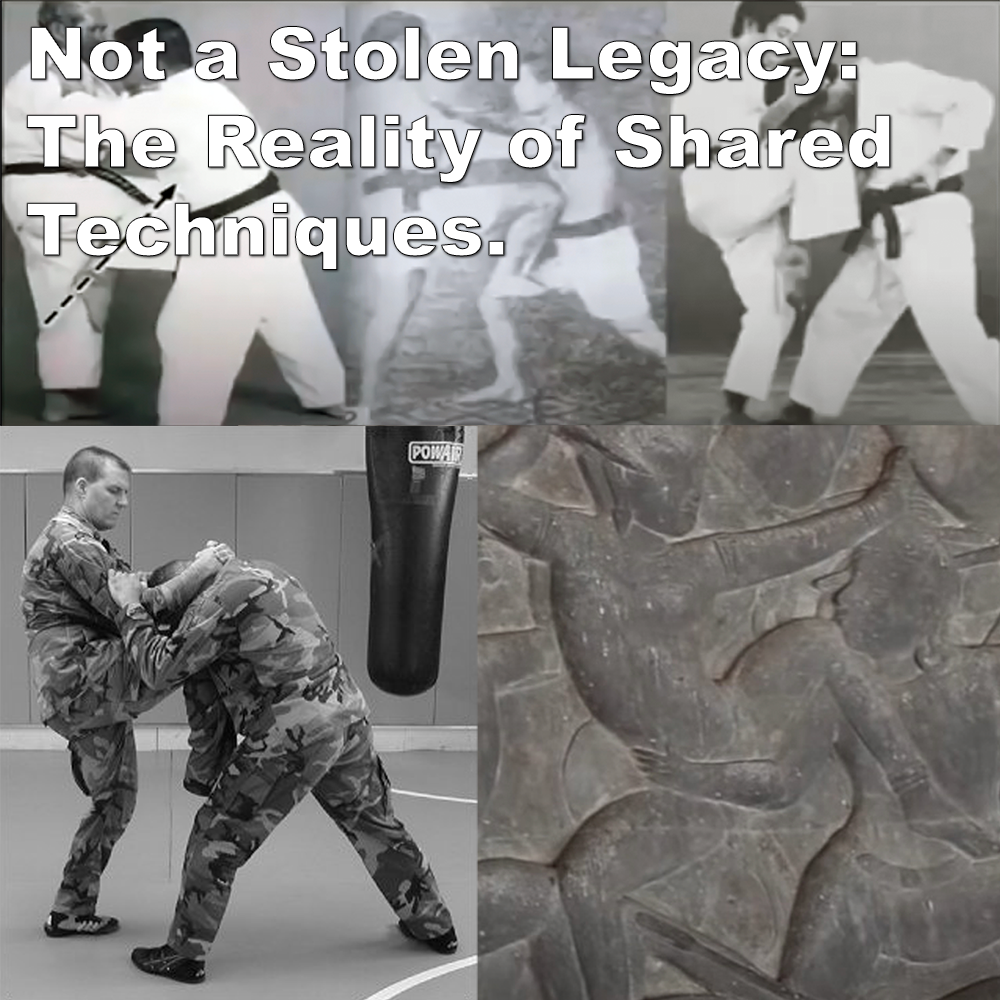
Not a Stolen Legacy: The Reality of Shared Techniques.
Posted by ADAM CARTER on AUG 05, 2024

Not a Stolen Legacy: The Reality of Shared Techniques.
(Approx 2 minute 10 second read)
In a recent comment on my article discussing modern techniques in traditional martial arts, I used the example of knee strikes in karate. The commenter claimed that this technique is exclusive to Muay Thai and accused me of stealing its legacy.
This claim not only dismisses the evidence presented but also overlooks the broader understanding of martial arts evolution and commonality. This perspective is fundamentally flawed.
The commenter could not accept that the knee strike in the example I gave is present in karate, despite the clear visual evidence. His denial often stems from a lack of understanding about the nature of martial arts and their development. It’s not difficult to see that knee strikes, as well as many other techniques, are shared across various martial arts disciplines, not just karate.
His insistence that knee strikes are unique to Muay Thai and not part of karate is a misunderstanding of the broader context of martial arts evolution. Techniques across different martial arts often converge due to common human anatomy and independent development.
The false assumption is that a particular technique can only originate in one place, e.g., “that joint lock is from Jiu Jitsu” or “that throw is from Judo.” The truth is that these arts developed common methods independently of each other. They all make use of biomechanics and weaknesses of human anatomy. Where the various arts differ is in the rules, the goals, and the context they are trained for.
Our bodies function in specific ways, leading to the development of similar techniques, regardless of cultural or geographic separation. The mechanics of knee strikes, for instance, are a natural extension of how our legs and bodies move. Therefore, it’s logical that multiple martial arts systems, including karate, would incorporate them independently.
Of course, while these similar techniques exist across different martial arts, they are often executed in distinct ways, reflecting the unique principles and training methods of each discipline.
But the idea that one group of people invented certain techniques and spread them globally is a myth. History and logic debunk this notion. Isolated groups have come up with similar martial solutions because the human body and the challenges it faces are universally consistent.
Another comment from a TKD practitioner stated; “nowadays people from traditional martial arts are trying to value its arts comparing moves to mma.”
The martial arts should not be viewed as having single ownership by various systems but rather as shared human knowledge. Techniques like knee strikes, or any other, are not the legacy of any single art; they are a testament to the ingenuity and adaptability of human beings worldwide. You have to look past the stylization of a technique to its function.
But, of course, if you believe that only one culture, only one system, ever figured out how to use their knees, or any other technique, there’s not much that can be done to combat such a dazzling display of ignorance.
FYI: The image on the bottom right is a 900 year old stone carving of knee attack to the head.
Let the comments fly once more.
AC
